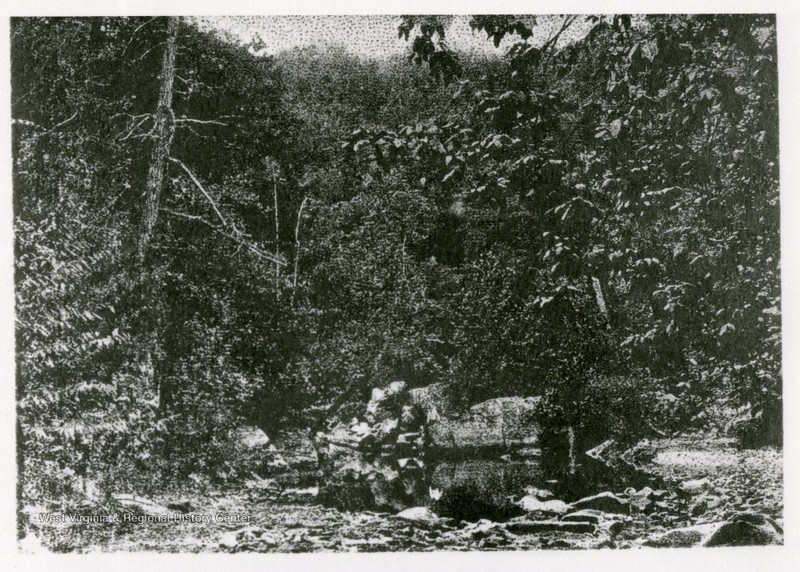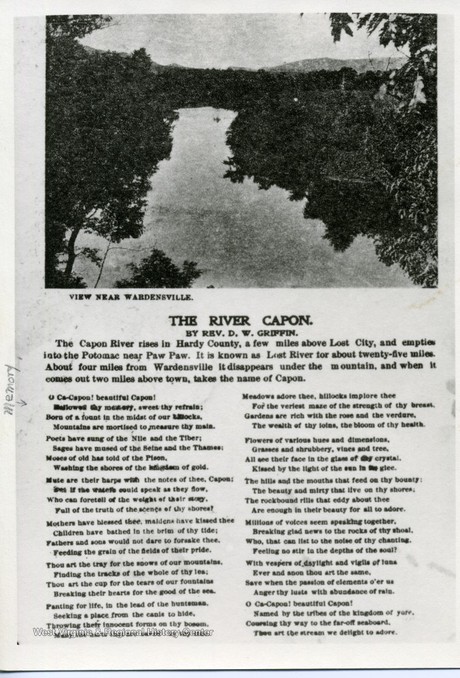Cacapon & Lost Rivers
Introduction
Text-to-speech Audio
Over a hundred miles long, the Cacapon and Lost Rivers offer notable views of the area and various activities for residents and visitors alike, such as kayaking and fishing. Many people also hunt in this area due to the diverse wildlife. A whitewater stretch of the Lost River flows just above the town from the southwest and once it reaches Wardensville is renamed the Cacapon River. This name comes from the Native American language, meaning “healing waters."
Images
Blue Sea Gap, south of Wardensville

The River Capon postcard with poem by D.W. Griffin

Two Women Exploring Lost River
.jpg)
Backstory and Context
Text-to-speech Audio
The 125-mile long Cacapon and Lost River Valley is known for its scenic beauty, canoeing and kayaking, fishing, hunting, and abundant wildlife. As the third-largest tributary of the Potomac River, the Cacapon and Lost River is an American Heritage River. The river is made up of three major segments and many small streams. Lost River is a 30.9-mile-long stretch, and during low water, it abruptly drops into a one-mile underground course starting near McCauley, WV. As it emerges just west of Wardensville, it takes on the name Cacapon and flows into Yellow Springs, WV where it becomes known as the Capon River. The river continues to flow northeasterly towards its eventual destination at the Potomac River. Capon River, as known today, rises in the southern part of Hardy County, flows through Hampshire County, and goes into the Potomac River in Morgan County.
Sources
Mason, Gary. Beyond the Great North Mountain: A History and Guide, December 15th 2016. Accessed August 1st 2020.
McKeever, Kenna. History of Wardensville, West Virginia, January 1st 1957. Accessed August 1st 2020.
